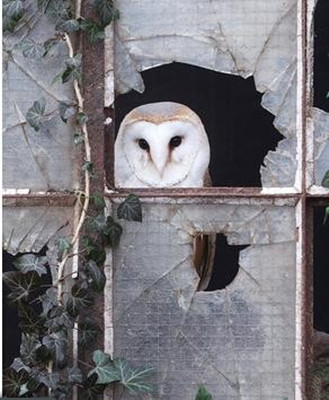英國鳥類遷徙趨勢
This bird has flown
有所改變
Why some species are thriving outside southern England
為什么英格蘭南部有些物種開始興盛?
WHEN people talk about a “north-south divide” in Britain they are usually referring to house prices, employment and the ratio of private-sector to public-sector jobs. The south scores higher on all such measures. But new data from the British Trust for Ornithology (BTO), a research charity, hints at the growth of another north-south divide—this time to the north's benefit.
在英國,當人們提到“南北分歧”的時候,他們通常指的是房價、就業(yè)和私企與國企就業(yè)率之比。在所有類似的測量標準中,英國南部地區(qū)的數(shù)據(jù)較高。但慈善研究機構英國鳥類研究信托公司提供的新數(shù)據(jù)表明,在另一種形式增大的南北分歧中,北部地區(qū)獲益較大。

Every 20 years the BTO produces a superbly detailed atlas of bird life in Britain and Ireland. The 2007 to 2011 edition is cheery: more species are tallied than in previous atlases, and many birds are increasing in number. Compared with two decades ago, 45% of regular native species are ranging more widely while 32% are living in smaller areas; the rest have stayed put. But the most striking news comes from the north.
每隔20年,英國鳥類研究信托公司都會公布一組有關英國和愛爾蘭的鳥類生活詳細地圖分布冊。2007-2011年的地圖分布冊顯示的數(shù)據(jù)令人振奮:與前幾年相比,記載了更多的物種;許多鳥類數(shù)量也有所增加。與20年前相比,45%的常規(guī)本地物種活動范圍擴大,32%生活范圍縮小;剩余的物種保持穩(wěn)定。此外,最令人驚喜的消息從北部地區(qū)傳來。
The overall populations of woodland, farmland and migrant perching birds are up in northern England and Scotland but down in the south. The same is true of individual species such as the garden warbler, bullfinch and swallow. The number of cuckoos, a closely-watched species, declined by 63% in England between 1995 and 2010 but by only 5% in Scotland. Raptors are faring especially well in the south, but their numbers are rising in most parts of Britain.
林地、農(nóng)田和中途停留的遷徙鳥類數(shù)量在英格蘭北部和蘇格蘭有所上升,但是在南部地區(qū)卻有所下降。相同的情況也適用于個別物種,如園林鶯、紅腹灰雀、燕子。常見的物種之一杜鵑的數(shù)量,從1995年到2010年下降了65%,但在蘇格蘭地區(qū)僅下降了5%。南部地區(qū)的猛禽在南方生活的尤其滋潤,其數(shù)量在英國大部分地區(qū)都有所上升。
Partly this reflects climate change, suggests Simon Gillings of the BTO. Some birds are drawn to warmer winters in Scotland and northern England; visiting migrants may stick around for longer. Hard though it may be to believe during a week of torrential rain, the south is becoming drier, pushing snipe northward. More efficient farming has squeezed some farmland species.
英國鳥類研究信托公司的西蒙·格林斯認為這部分反映了氣候變化。有些鳥類遷往蘇格蘭和英格蘭北部等冬天較為溫暖的地方;旅鳥停留的時間可能會更長。我們很難相信在一周的強降雨之后,南部地區(qū)變得更加干燥,使得物種向北部遷移。高效率的農(nóng)耕方式也使得一些農(nóng)田物種的數(shù)量降低。
Some birds find it harder to make homes in the south, too. Pressure on housing means dilapidated buildings and barns, handy for nesting, have been converted into human dwellings. Between 2006 and 2012 the number of vacant dwellings fell by 17% in London and by 12% in Kent. Over the same period the number of empty houses increased by 16% in Derbyshire and by 10% in Lancashire. Northern mining villages once full of workers are now sparsely populated, points out Ian Bartlett, a birdwatcher in Hartlepool, in north-east England. They have become hot spots for birds and the people who watch them.
有些鳥類也發(fā)覺在南部地區(qū)繁衍更為艱難。以往適宜筑巢的荒廢建筑物、谷倉都被人們的住房所占領。2006年至2012年,倫敦的房屋空置率下降了17%,肯特郡的下降12%。同一時期,德比郡的房屋空置率上升16%,而蘭開郡的上升10%。哈特爾普爾的鳥類觀察員蘭·巴特勒稱,位于英格蘭東北部的北部采礦型鄉(xiāng)村曾一度人滿為患,現(xiàn)在人煙稀少。
Cultural difference also plays a part, thinks Mark Cocker, an expert on birds. The “obsession with tidiness” is stronger in the south, he says. Fewer people cultivate gardens; they prefer to cover them in decking and remove weeds from between concrete slabs. Village greens are mowed short. In contrast, Scotland and northern England have more trees, grassland and wind-swept moors. Less popular with humans, rugged parts of the countryside are filling up with a winged population instead.
鳥類專家馬克·科克爾認為,文化差異也起了一定的作用。他表示,南部地區(qū)的人們“癡迷于整潔”的表現(xiàn)更為強烈。很少有人整理花園,他們更喜歡在花園裝飾木甲板,在堅硬的石板中間除草。村莊草地也經(jīng)常修剪得整整齊齊。相反,蘇格蘭和英格蘭北部地區(qū)擁有更多的樹林、草地和荒涼的沼澤地。很多崎嶇的鄉(xiāng)村人煙稀少,而鳥類卻在此扎根,欣欣向榮。譯者:毛慧 校對:王化起












